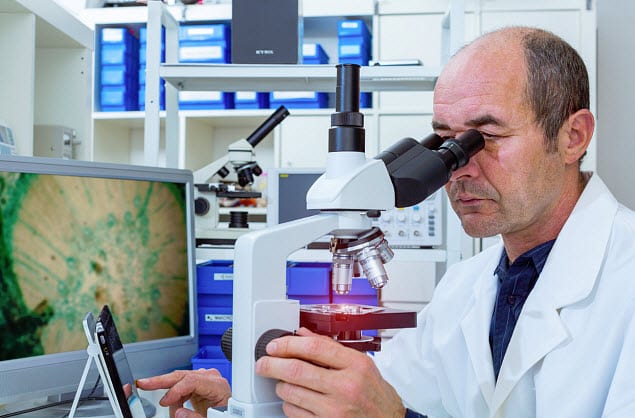Research project explores cleaner and cheaper enhanced geothermal energy systems
October 9, 2015Enhanced geothermal power production could become more viable with new fluid.
A geothermal energy research project by New Mexico State University Assistant Professor Kenneth C. Carroll and a group of other researchers is exploring non-polluting and cost-effective enhanced geothermal systems (EGS). Their research has led the group to develop a new fracturing fluid that utilizes an eco-friendly polymer to create miniscule cracks in bedrock deep below the earth’s surface.
EGS have greater potential to tap the energy of geothermal hot spots in areas where bedrock is otherwise impermeable.
Enhanced geothermal systems are designed to allow power production in areas where traditional geothermal techniques are inadequate. Unlike standard geothermal systems that depend on porous rock, EGS have a better chance at accessing energy from the Earth’s natural heat that exists below otherwise impermeable bedrock; areas that exist in places such as the Western U.S., like New Mexico.
According to Carroll, “The U.S. Geological Survey says most of the western U.S. has heat areas close to the surface.” He explained that New Mexico and most of the Western United States has “basin and range geology” characterized by valleys, mountain ranges, or flat basins. This usually implies that heat sources in the ground are closer to the surface compared to other areas. Therefore, the development of a renewable resource like geothermal in these areas, is highly sensible.
The new fracturing fluid designed for geothermal energy projects may also be an eco-friendly solution for unconventional gas and oil recovery.
The tiny cracks that are created in the rock from the environmentally-friendly fracturing fluid is a process known as “reservoir stimulation”. The cracks provide spaces for the water to be pumped into the rock. The earth’s heat is hot enough (approximately 150 – 400 degrees Celsius) at depths of 900 – 4,000 meters to turn the water to steam, which is returned to the surface and used as a source of energy for power plants.
According to an article from the New Mexico State University News Center, researchers are testing the fluid’s performance on cylindrical samples of impermeable rock. What the researchers discovered was that time after time the fluid created small but effective cracks in the samples, allowing water to flow through. These test results have led them to believe that tests of a larger scale may produce bigger cracks.
In addition, not only does the research team expect that their fluid could be recycled at a low cost, but they are also studying a similar fluid for unconventional gas and oil recovery. While the process would utilize a different polyamine that is like the chemical used in the geothermal extraction fluid, it would still be stable, and be able to withstand extreme pressures, acidity levels, and temperatures. If it proves to be effective for unconventional gas and oil extraction, using the non-toxic and recyclable fluid would result in water being used more efficiently.
The geothermal energy research was funded by the Geothermal Technology Office within the Department of Energy’s Office of Energy Efficiency and Renewable Energy.

 HFN News is your leading source for fresh hydrogen and renewable energy updates. Amid the fast-paced growth of hydrogen companies, we provide top-notch news and insights about this exciting sector. Our coverage spans from hydrogen cars to global sustainable initiatives, and we highlight the latest in green jobs and developing hydrogen hubs. We invite you to share your local hydrogen news and explore today’s renewable energy job listings on our site. Thanks for choosing HFN News as your trusted guide to the hydrogen and renewable energy world!
HFN News is your leading source for fresh hydrogen and renewable energy updates. Amid the fast-paced growth of hydrogen companies, we provide top-notch news and insights about this exciting sector. Our coverage spans from hydrogen cars to global sustainable initiatives, and we highlight the latest in green jobs and developing hydrogen hubs. We invite you to share your local hydrogen news and explore today’s renewable energy job listings on our site. Thanks for choosing HFN News as your trusted guide to the hydrogen and renewable energy world!